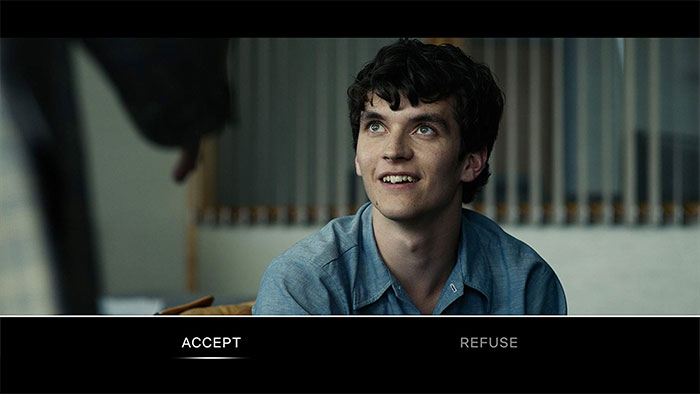Interactive films are a type of movie that allows viewers to choose actions for their characters in specific scenes. Typically, there are two choices, and each choice leads the film down a different narrative path, depending on the viewer’s selection.
Interactive films have only recently emerged as a formal “film” genre; prior to that, they were considered a game format presented in a cinematic style containing numerous script codes (multiple scripts and different scenes).
Essentially, interactive films are quite similar to interactive games, as they permit viewers to make choices for the main character’s actions. Some notable examples of interactive films include Black Mirror, The Trip, and Until Dawn. In these films, there are segments where characters must choose between two items or situations. Each choice leads to different outcomes and alters the entire storyline of the film.
For instance, in the film Black Mirror, when the main character Stefan Butler receives a job offer at a game company, he faces two choices: to accept or to refuse. At this point, the audience’s task is to make a decision on behalf of the character. If the audience chooses Accept, Stefan will be given a workspace alongside impressive colleagues; if they choose Refuse, he will have to stay home and continue with his current job.

Scene where Stefan receives the job, and the viewer’s task is to choose one of the two: Accept or Refuse.
This unique aspect of interactive films allows us to observe how the narrative unfolds in two different directions, and of course, the film’s outcome rests in your hands. Therefore, interactive films enable viewers to experience one movie while feeling as though they are watching two or three additional films, as they can rewind the video and choose the alternative option to see how the story’s progression differs from their initial choice.
Typically, a film will have several dozen scenes with such choices, and just a rough calculation shows that the film could have hundreds of possible endings. It’s fascinating to watch a film while being the director of that film, isn’t it? Even “super researchers” or “film prodigies” cannot predict how the script will unfold, and plot twists as sharp as those in Penthouse will surely surprise you.
If viewers are too lazy to choose between the two options, the film will continue and default to the left option.
However, due to the multitude of potential outcomes, the writing, filming, and editing processes will require significant time to prepare for different scenes. Of course, costs will increase, but in return, it offers audiences a fresh breeze in entertainment, transforming the viewing experience into a game of “choose the right price”: The duration and outcome of the film completely depend on the viewers themselves.
Will interactive films become the new trend in cinematic production? The answer is absolutely possible. Audiences are currently immersed in blockbuster films that are well-invested in both content and special effects. However, they demand a new form of entertainment that goes beyond simply lounging on the sofa or going to the cinema. Interactive films are the new key that opens the door to uniquely different film production.
In the future, interactive films will pose a formidable challenge to both the film industry and game production.


















































